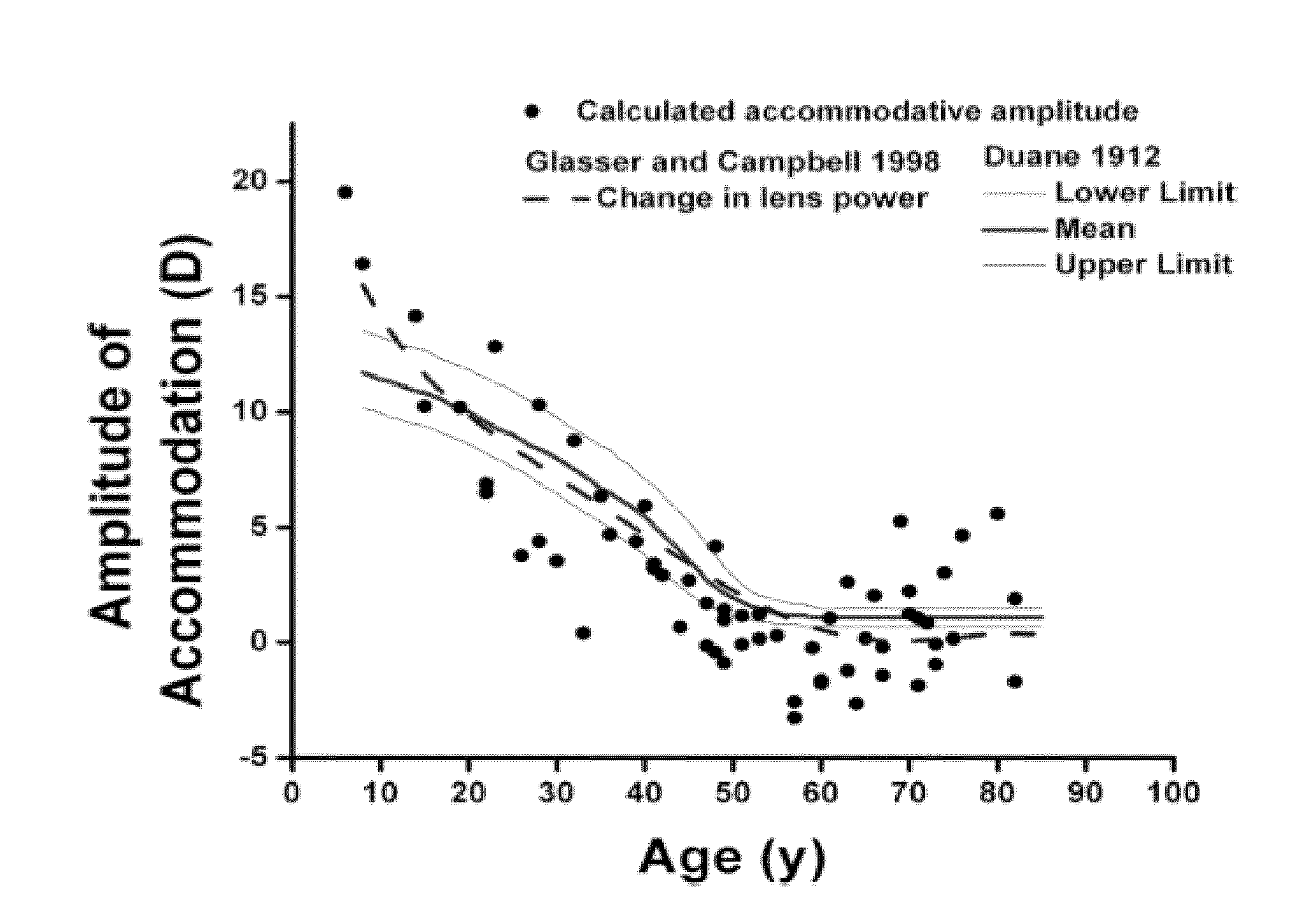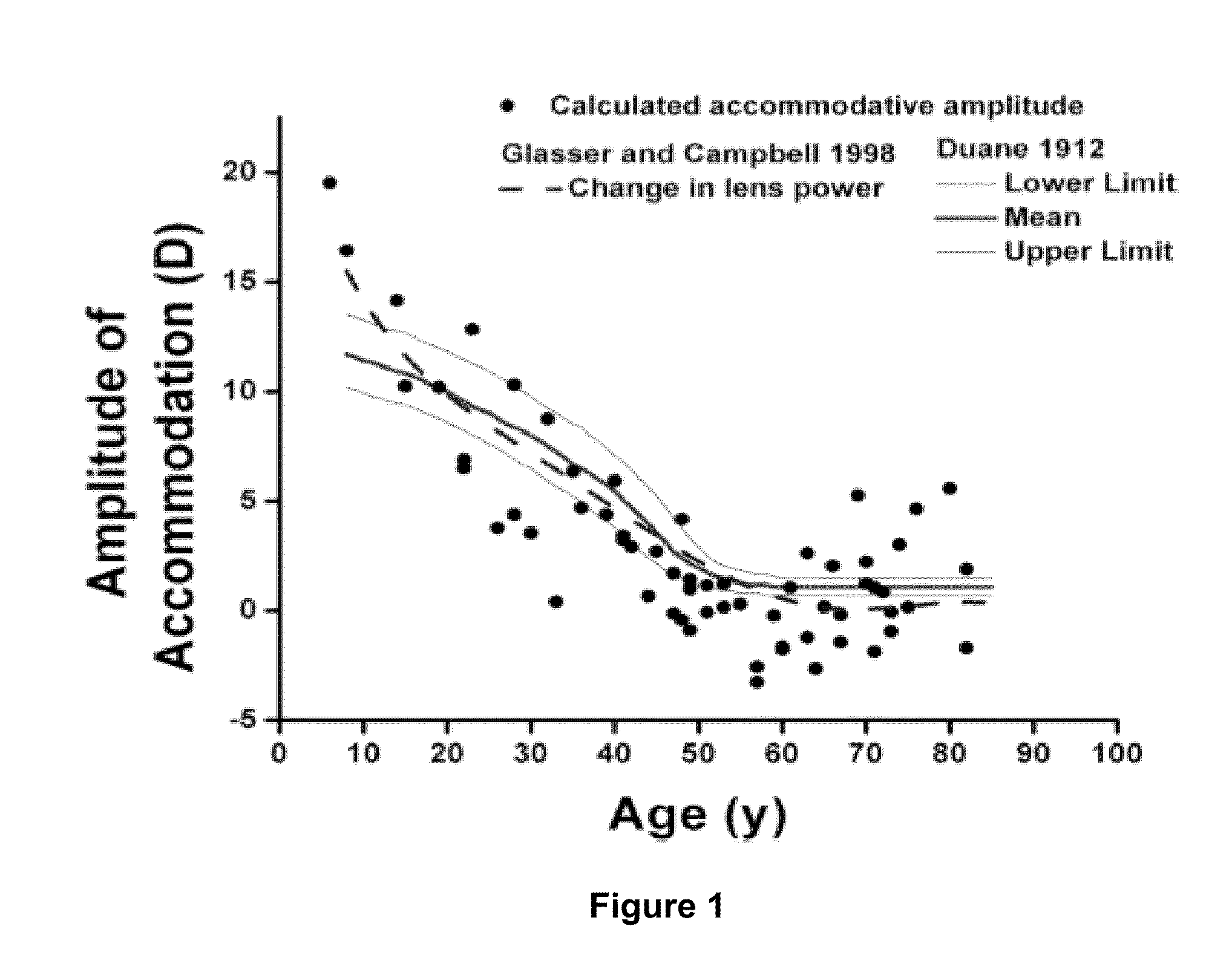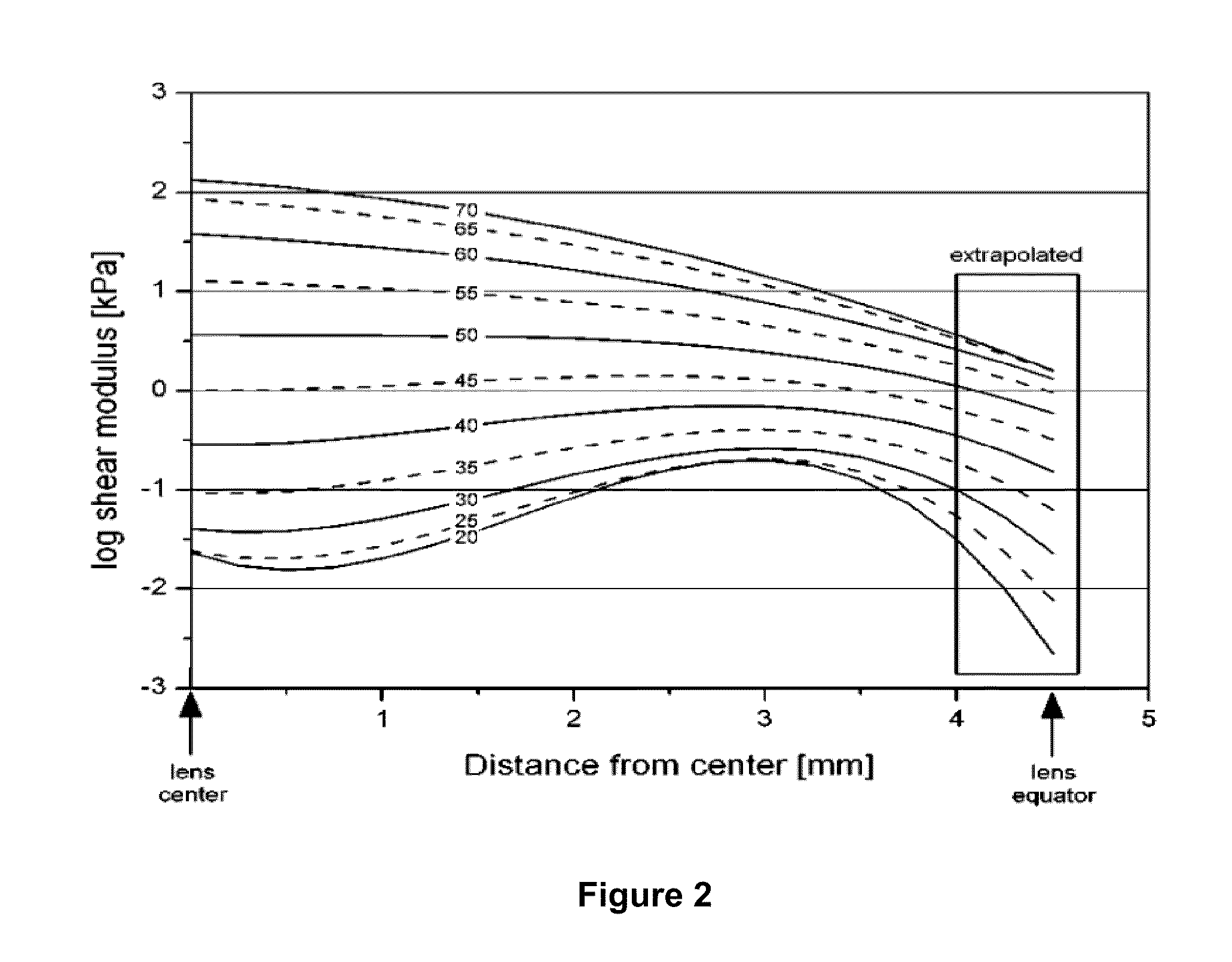Dithiol compounds, derivatives, and treatment of presbyopia
a technology of dithiol compounds and presbyopia, applied in the field of dithiol compounds, derivatives, and presbyopia treatment, can solve the problem of more difficult to focus on near objects
- Summary
- Abstract
- Description
- Claims
- Application Information
AI Technical Summary
Benefits of technology
Problems solved by technology
Method used
Image
Examples
example 1
[0099]Increase in Elasticity: Pairs of mouse lenses were incubated in medium 200 supplemented with an antibiotic, an antimycotic, in the presence or absence of lipoic acid (concentrations ranging from 0.5 μM to 500 μM) for 8-15 hours. Each lens was removed from medium, weighed, and photographed on a micrometer scale. A coverslip of known weight (0.17899±0.00200 g) was placed on the lens, and the lens was photographed again on the micrometer scale. The diameter of each lens with and without the coverslip was determined from the photographs. The change in lens diameter produced by the force (coverslip) was computed ΔD=(Dwithcoverslip−Dwithoutcoverslip). The results (FIG. 4, ‡) indicate that lipoic acid at concentrations≧9.6 μM caused a statistically significant increase in ΔD, p<0.0001.
[0100]Decrease in disulfide bonds: Lipoic acid at concentrations≧9.6 μM caused a statistically significant decrease in protein disulfides in the mouse lenses where there was a s...
PUM
| Property | Measurement | Unit |
|---|---|---|
| diameter | aaaaa | aaaaa |
| oxidative stress | aaaaa | aaaaa |
| shear modulus | aaaaa | aaaaa |
Abstract
Description
Claims
Application Information
 Login to View More
Login to View More - R&D
- Intellectual Property
- Life Sciences
- Materials
- Tech Scout
- Unparalleled Data Quality
- Higher Quality Content
- 60% Fewer Hallucinations
Browse by: Latest US Patents, China's latest patents, Technical Efficacy Thesaurus, Application Domain, Technology Topic, Popular Technical Reports.
© 2025 PatSnap. All rights reserved.Legal|Privacy policy|Modern Slavery Act Transparency Statement|Sitemap|About US| Contact US: help@patsnap.com



